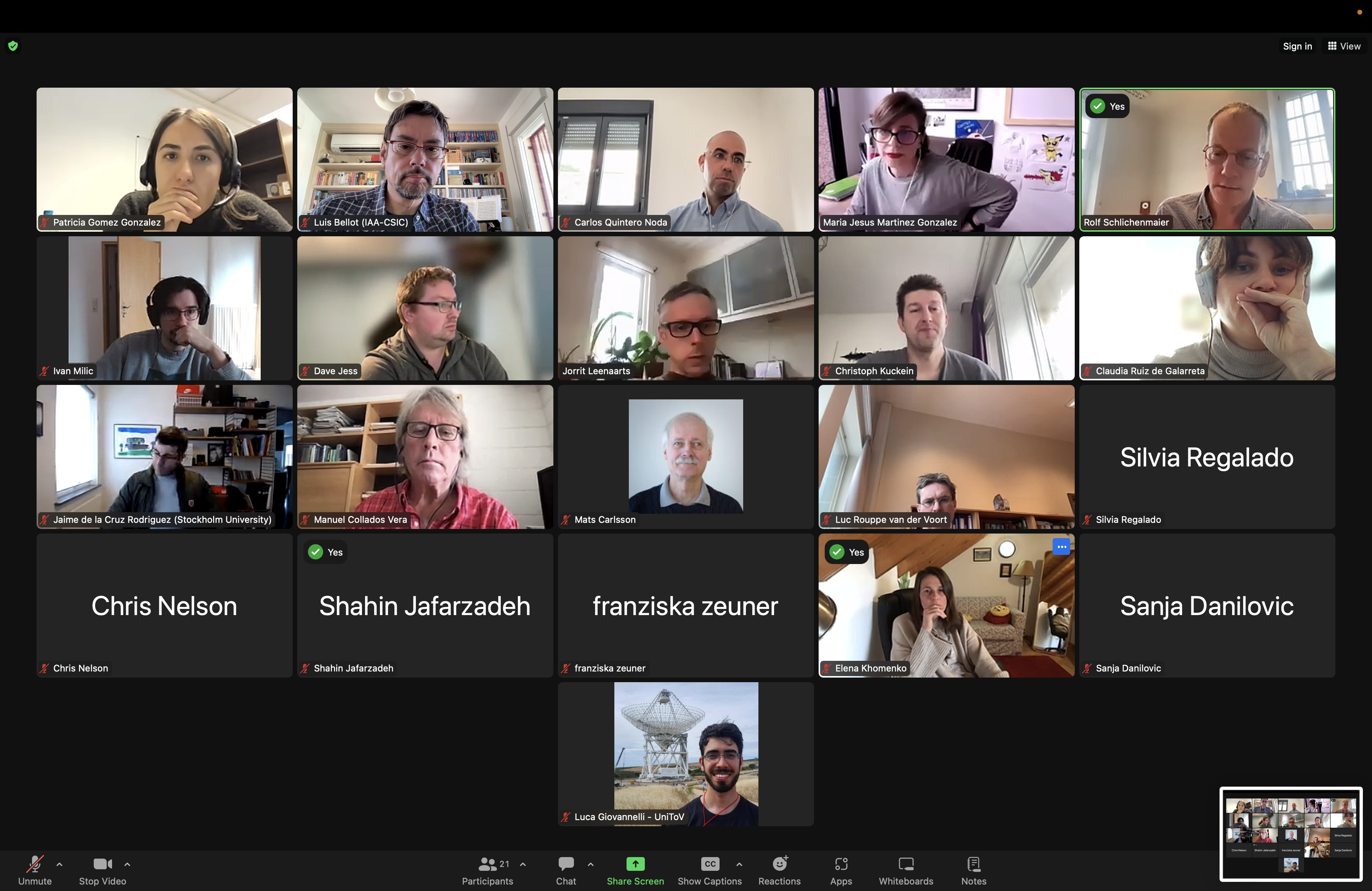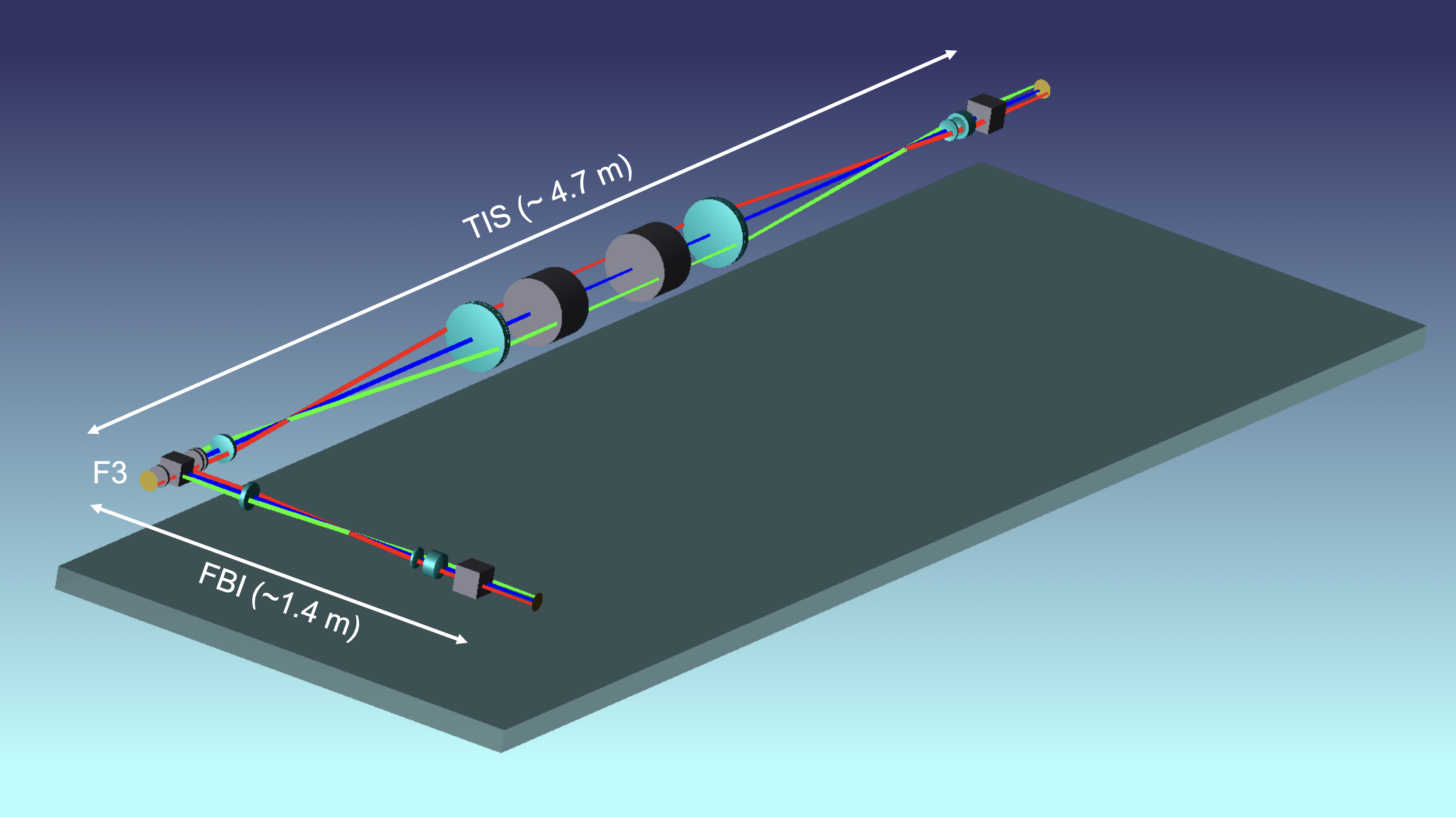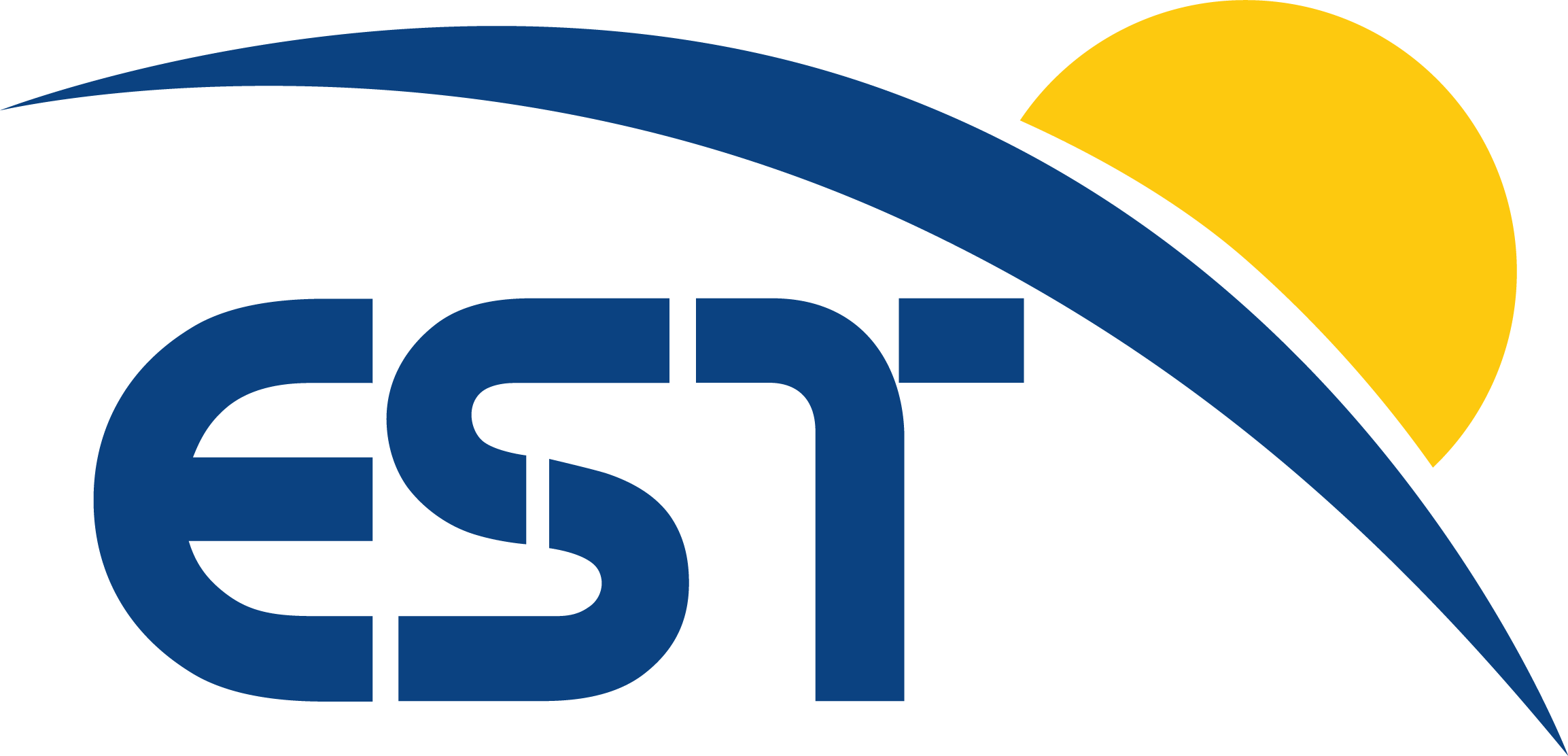An update on the EST SAG activities in 2024 is presented.
 Online SAG meeting on February 19, 2024. Credit: L. Bellot (IAA-CSIC)
Online SAG meeting on February 19, 2024. Credit: L. Bellot (IAA-CSIC)
The EST Science Advisory Group (SAG) consists of twenty two European scientists. The SAG is defining the scientific requirements of EST and is monitoring their consequences for the technical specifications of the EST design. Observing programmes have been devised to address the science objectives of the Science Requirement Document that was last updated in 2019 and is available under reference arXiv:1912.08650 at the University of Cornell's arXiv system that the astronomical community uses to share publications. The suite of post-focus instruments and their distribution in the Coudé rooms was approved in 2022 and is described in the science article "The European Solar Telescope" published in the journal Astronomy & Astrophysics in October 2022 (Volume 666, A21).
The instrument suite of EST comprises two types of spectropolarimeters. The first type consists of two-dimensional narrow-band Fabry-Pérot spectrometers that scan across individual spectral lines. These instruments have a large field of view, but need a finite time for the scanning. They are called Tunable Imaging Spectropolarimeters/Fixed-Band Imagers (TIS/FBIs), as they also have the capability to do simultaneous broad-band imaging. A total of three TIS/FBIs are foreseen for EST. They will observe simultaneously in three spectral regions: the blue (390-500 nm), the visible (500-680 nm), and the red (680-1000 nm). The second type are spectrograph-based integral field units that measure the spatial two-dimensional domain and wavelength strictly simultaneously, at the cost of a limited field of view. This instrument type is called Integral Field Spectropolarimeter (IFS), and for EST, four such instruments in the blue, visible, red, and near-infrared (1000-2300 nm) are planned. While all IFSes are based on a grating spectrograph, the spatial mapping is done with different techniques: for the near-infrared arm, an image slicer (IFS-S) is used, while for the shorter wavelengths, micro-lens hyperspectral imagers (IFS-M) will be employed.
As all instruments advance in their design, it is necessary to revise the technical specifications of the instruments. In particular, compromises between photon flux, spectral range, spectral resolving power, polarimetric accuracy, spatial pixel size and field of view need to be found. Performance limitations are primarily due to two reasons: on the one hand, the number of solar photons is limited while the solar atmosphere is dynamic on very short time scales, and on the other hand, even though detector made enormous developments in recent decades, their sizes and pixel numbers are still limited. The SAG is responsible for discussing the consequences of those parameters and needs to find the best possible compromise between them to ensure the best scientific performance of the instruments.
Two meetings in the first half of 2024 were dedicated to discuss the requirements and specifications of the IFS-S and TIS/FBI instruments. The IFS-S design is led by the IAC based on their experience with the GRIS image slicer at the German GREGOR telescope. The instrument is called EMBER (EST spectropolariMeter Based on slicEr mirrors for the near infraRed). For technical feasibility reasons the number of detector pixels is limited and in addition the solar photon flux decreases from the visible towards the infrared, i.e., compromises are necessary for the spatial pixel size and the field of view. The EMBER group analysed the scientific impact of these technical parameters on the scientific objectives of relevant observing programmes and presented their conclusions at the SAG meetings on February 19 and March 20, 2024. The instrument will be optimised for the He I 1083.0 nm spectral region. It will provide a field of view of 10" x 10" (plus mosaicking) with a spatial resolution of 0.1", a spectral resolving power of 120 000, a wavelength range of 1.5 nm, and a polarimetric sensitivity of 5 x 10-4 in the He I 1083.0 nm line core. EMBER will have a diffraction-limited context imager. The overall concept and the proposed numbers were approved by the SAG on March 20, 2024.
 3D Render of the TIS/FBI optics assembly. Credit: TIS/FBI consortium
3D Render of the TIS/FBI optics assembly. Credit: TIS/FBI consortium
 Table 1. Integration times needed by the TIS/FBI instruments to reach the specified signal-to-noise ratios with the resolving power R.
Table 1. Integration times needed by the TIS/FBI instruments to reach the specified signal-to-noise ratios with the resolving power R.
The second major task accomplished in 2024 was to define the spectral resolving power of each of the three TIS/FBI instruments. The TIS/FBI consortium, led by IAA-CSIC, studied the wavelength-dependent throughput of the telescope, the Coudé Light Distribution system and the instrument to derive the integration times needed to collect enough photons to fulfil the required signal-to-noise ratios. The results of this analysis were presented and discussed by the SAG in February and March 2024 (see Table 1). Driven by the requirements of the observing programmes in the three optical arms, the following spectral resolving powers are considered to be the best compromise: 50 000 at 396 nm for TIS/ FBI-B, 100 000 at 630 nm for TIS/FBI-V, and 80 000 at 854 nm for TIS/FBI-R.
As the design of the instruments progresses, their scientific requirements and technical specifications will need to be studied and monitored by the SAG continuously. The discussion on what spectral resolution is needed for the IFS instruments in the blue, visible, and red is ongoing.
